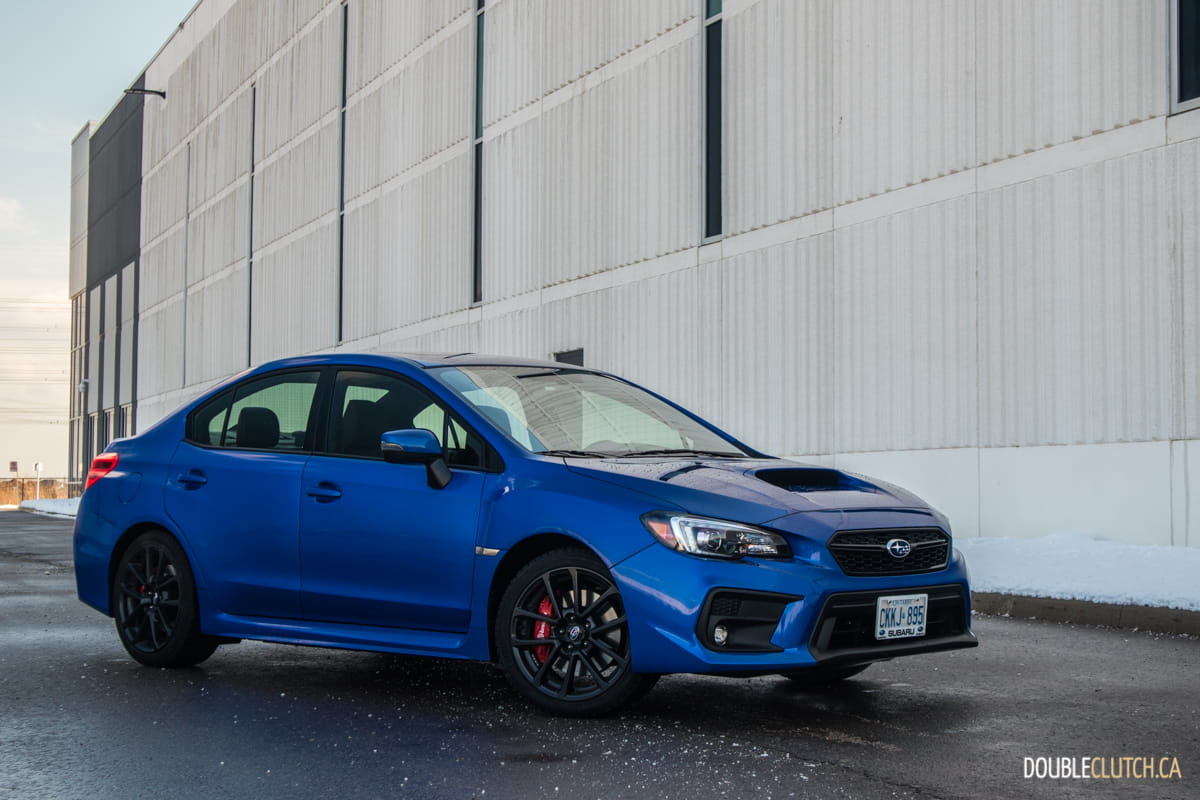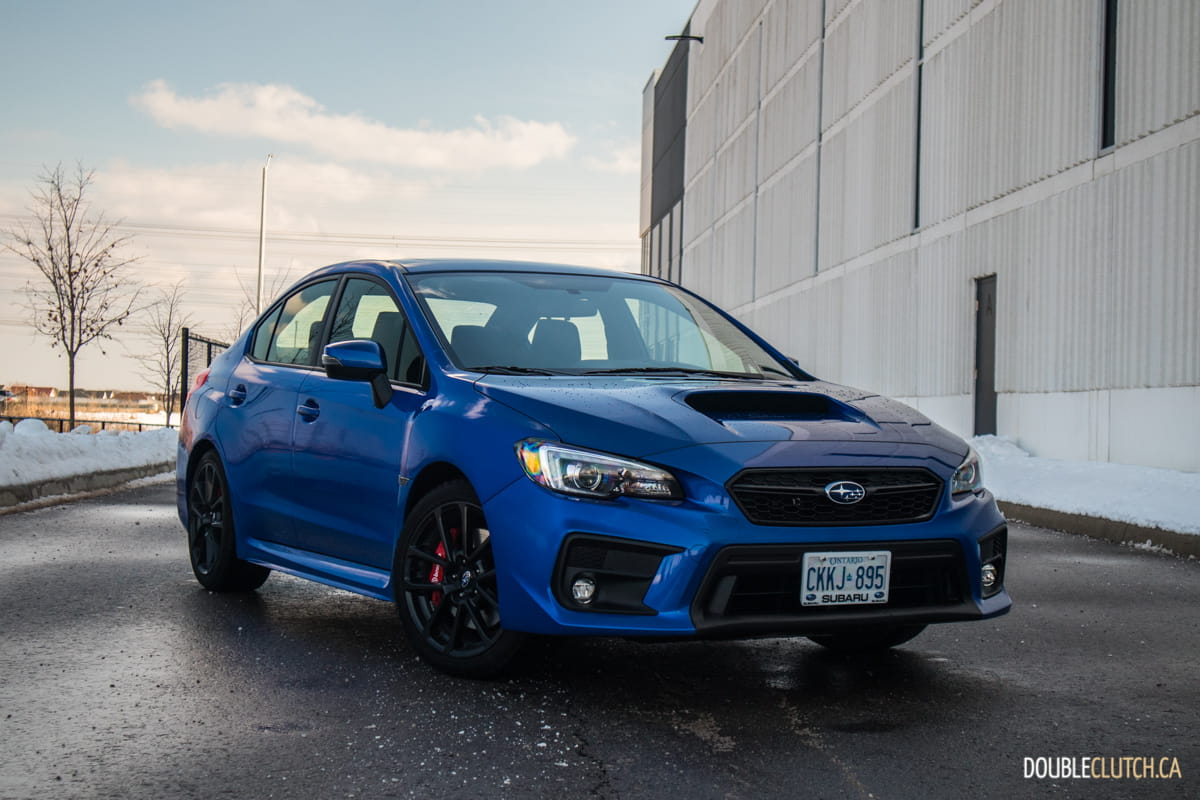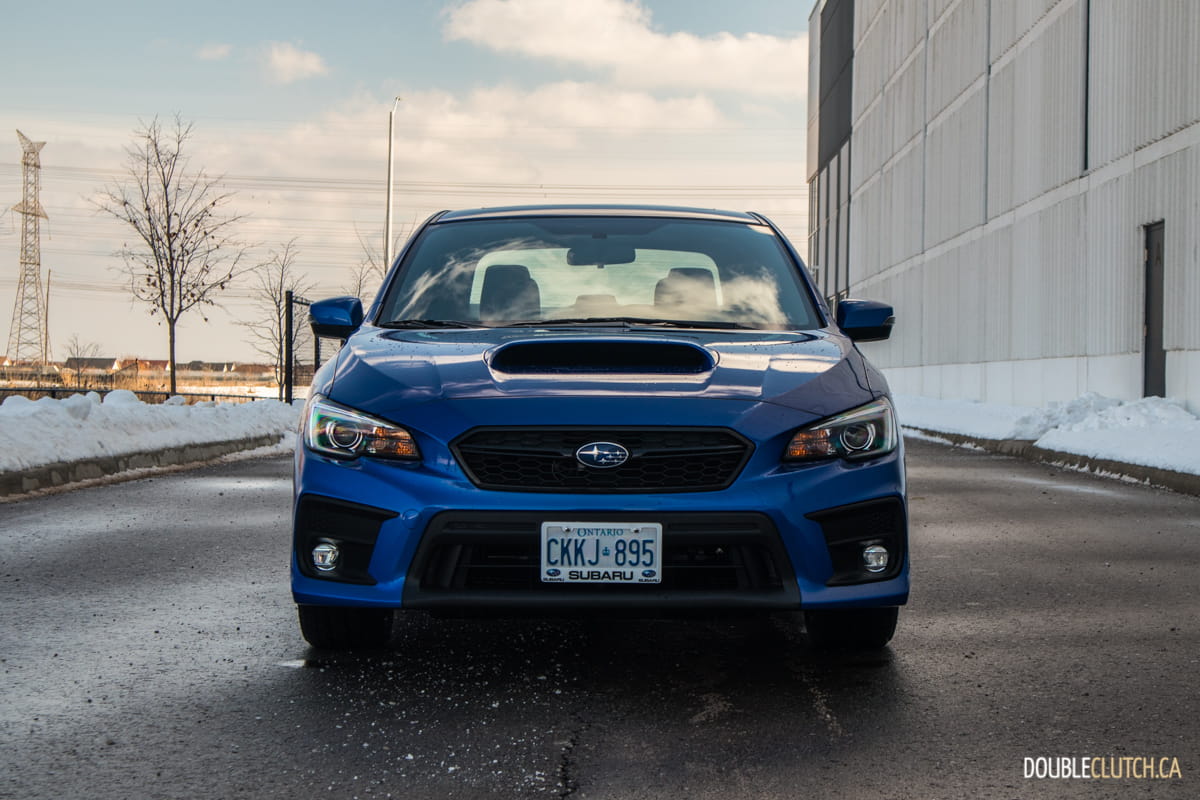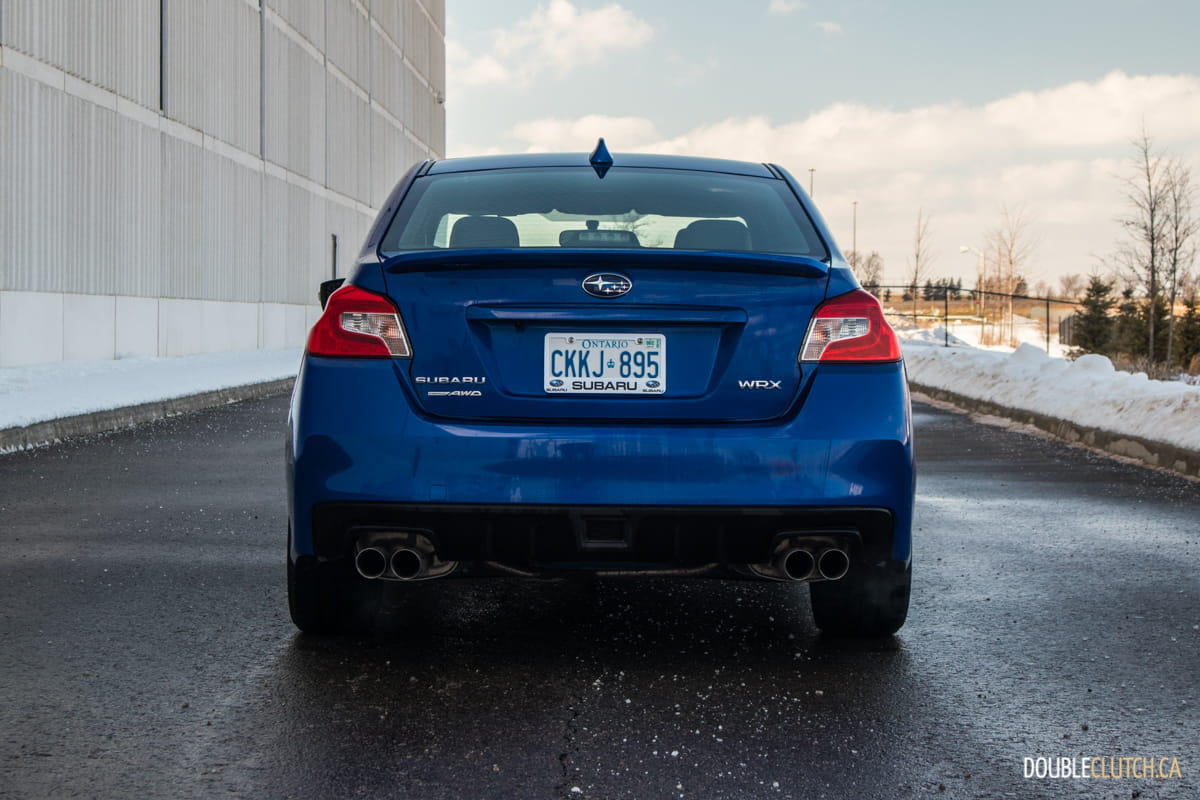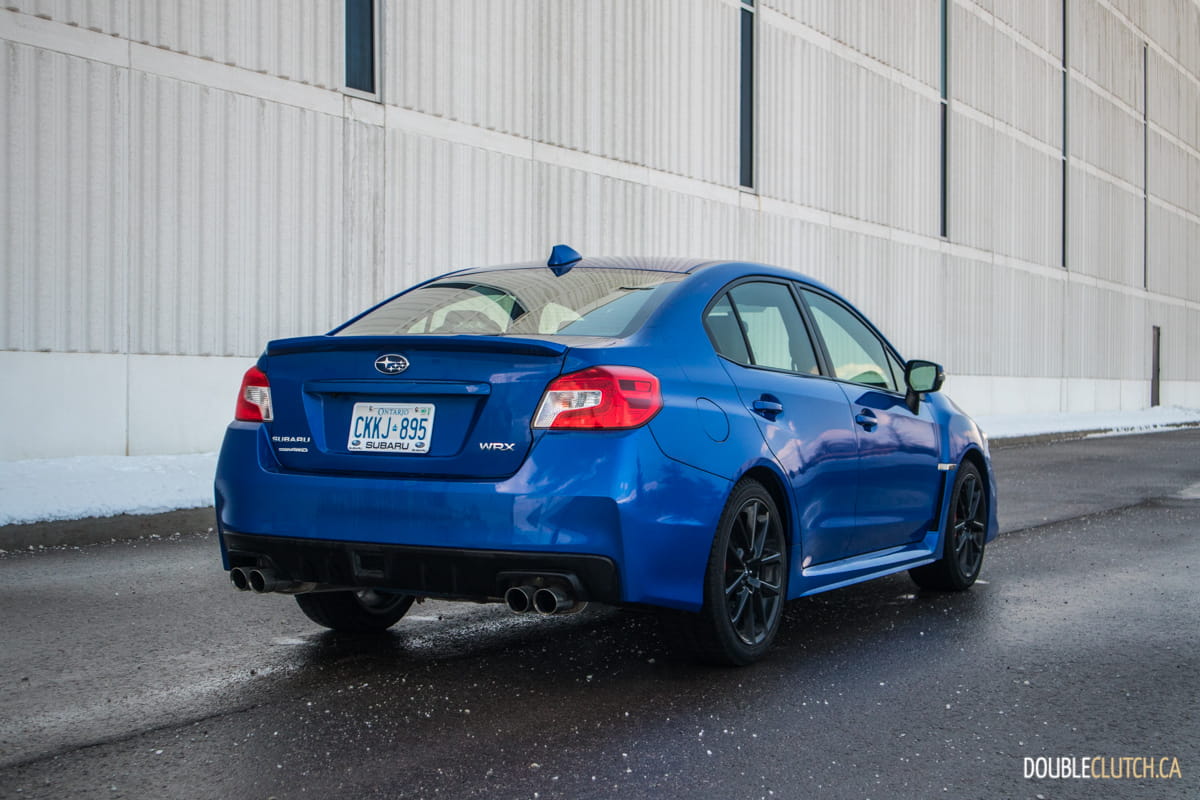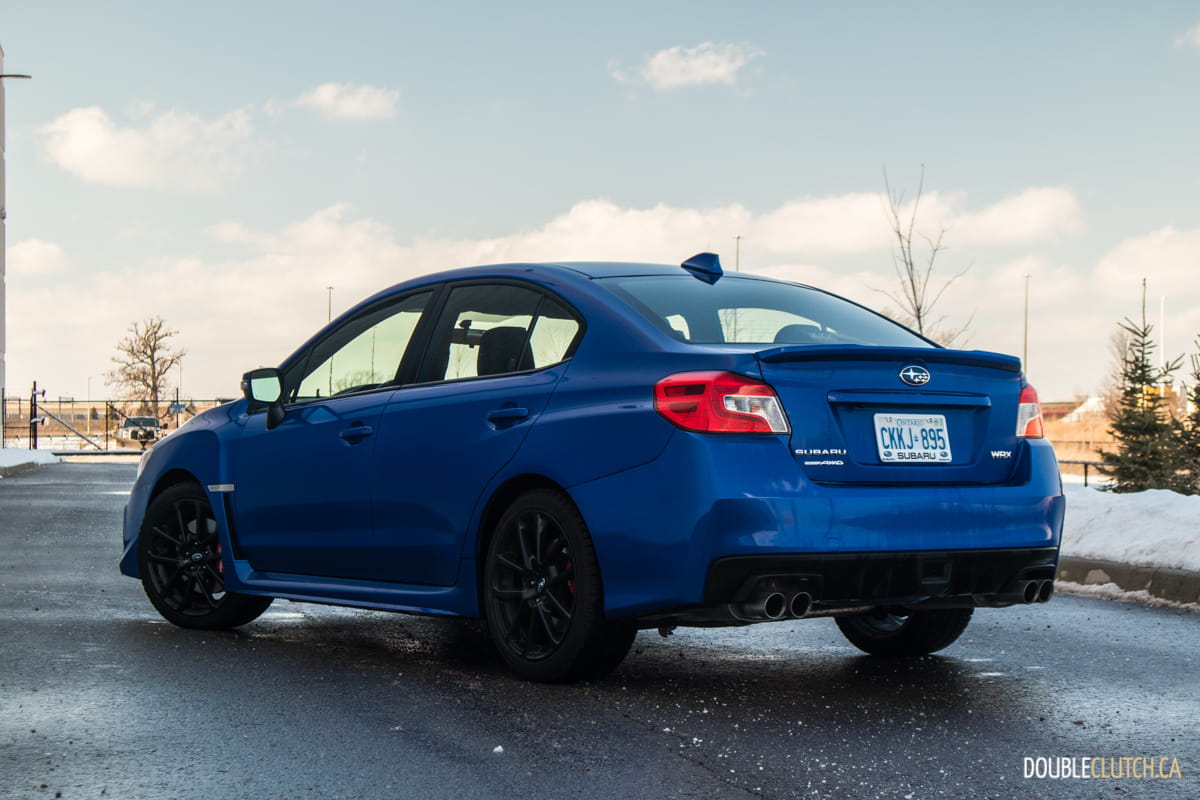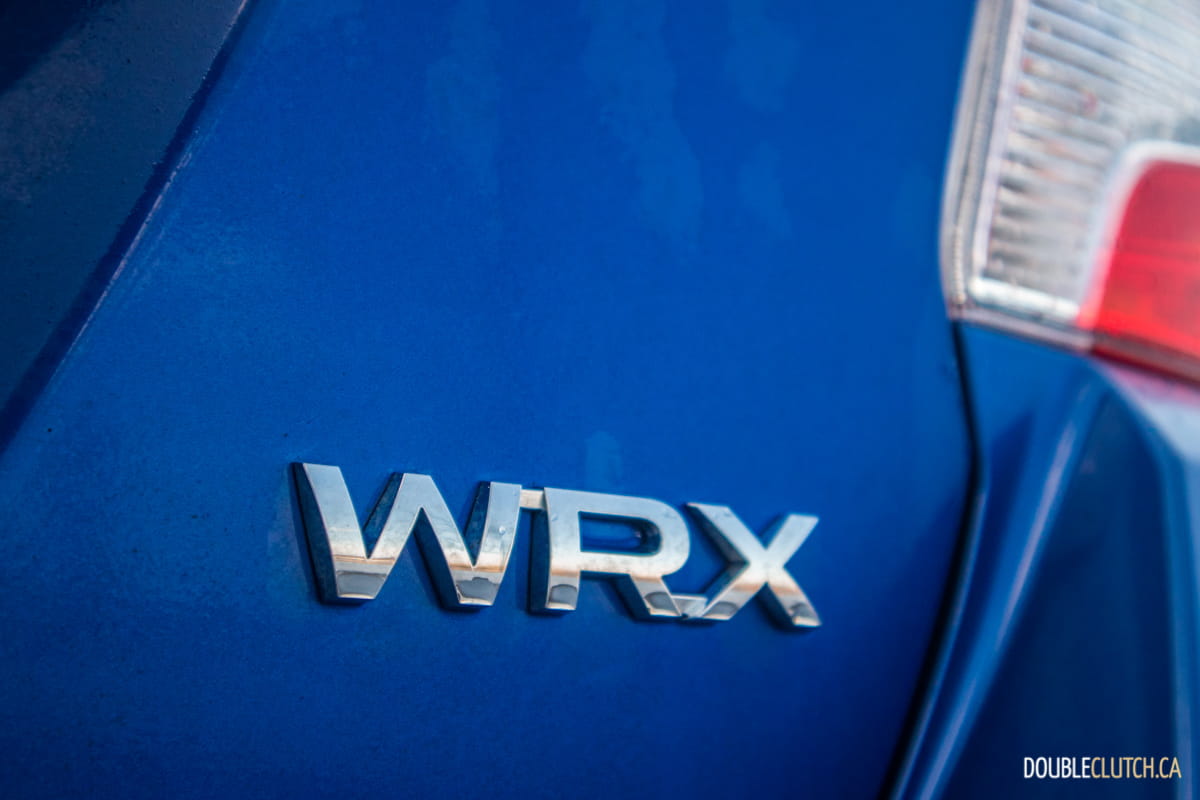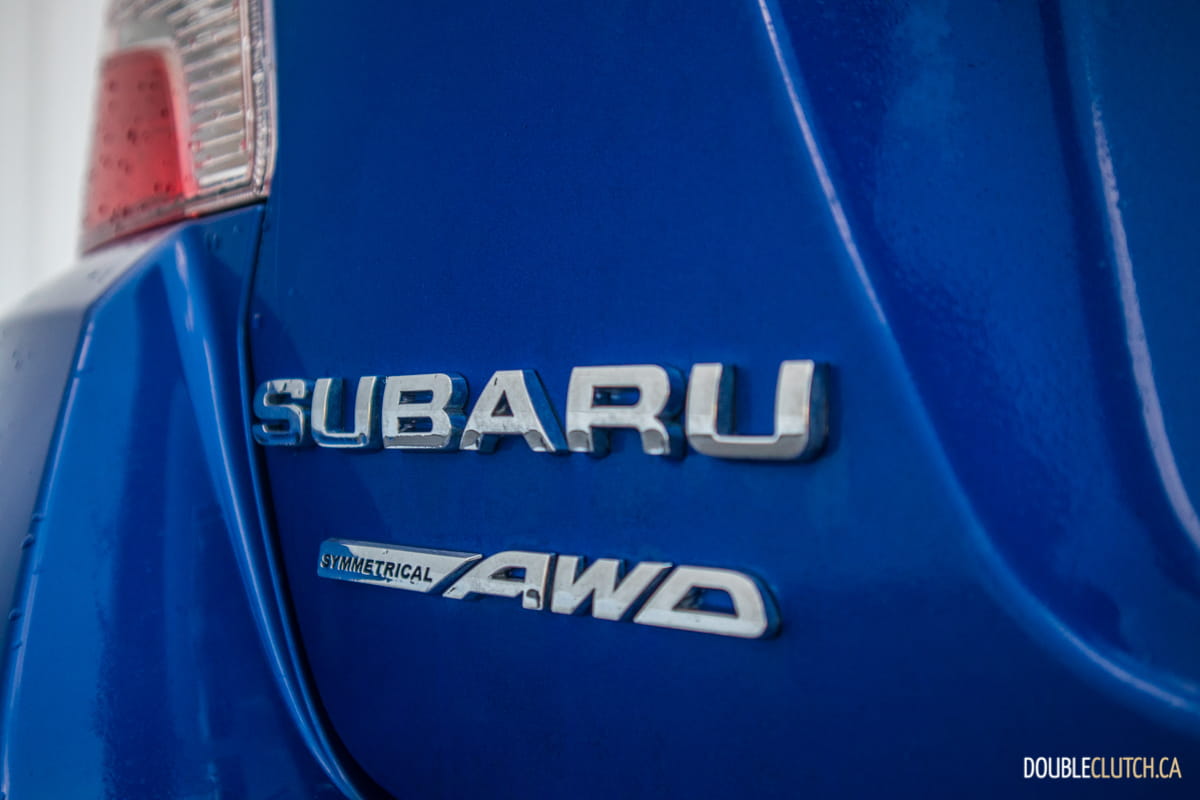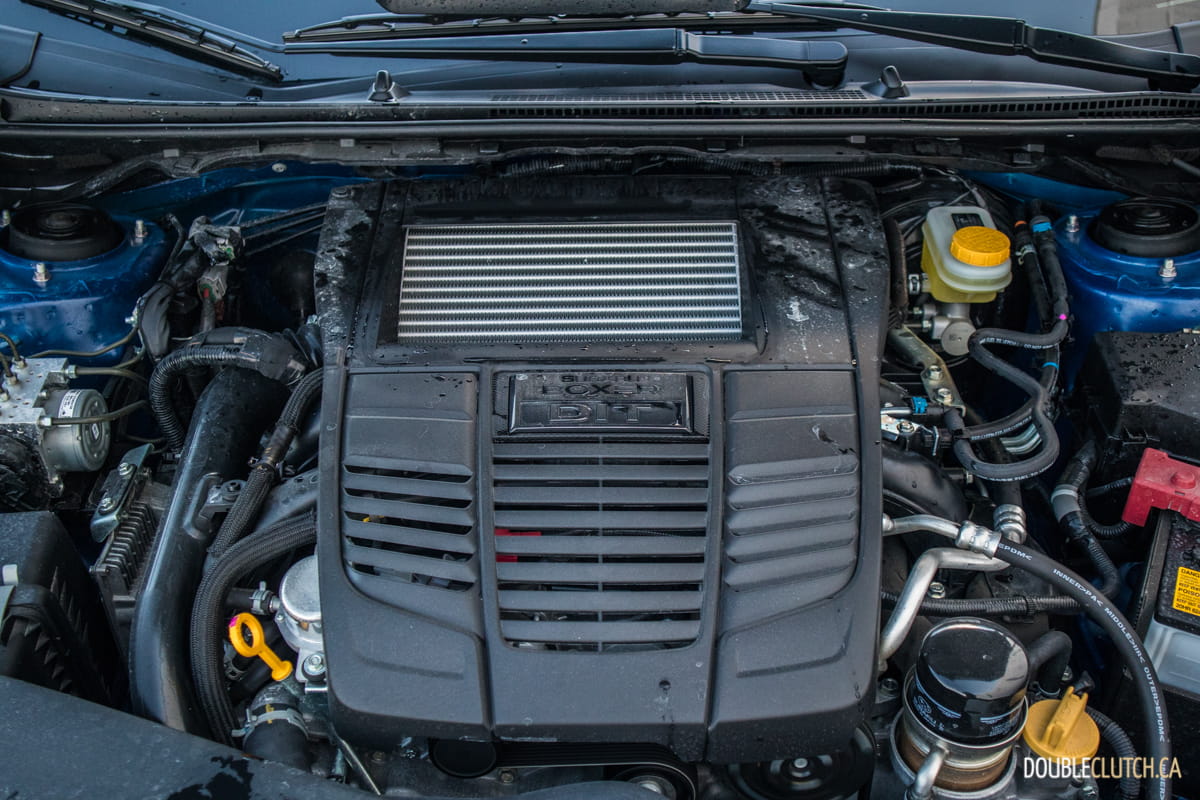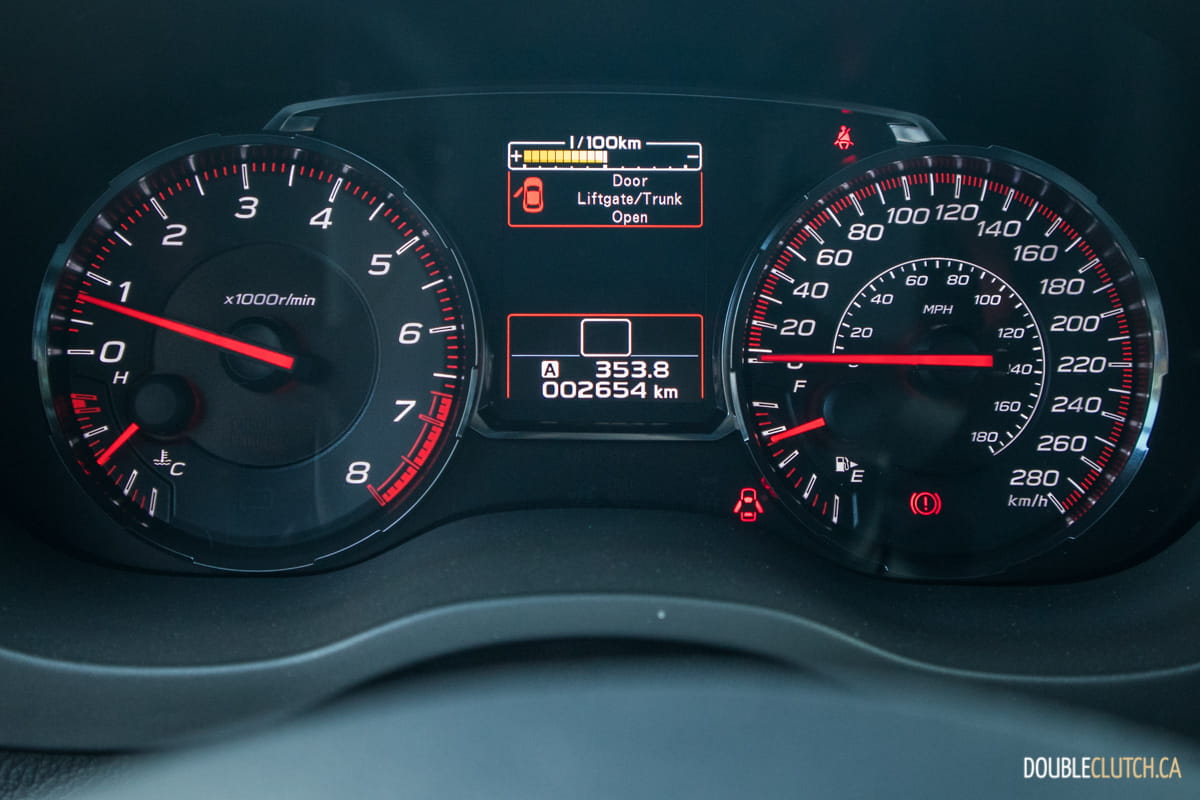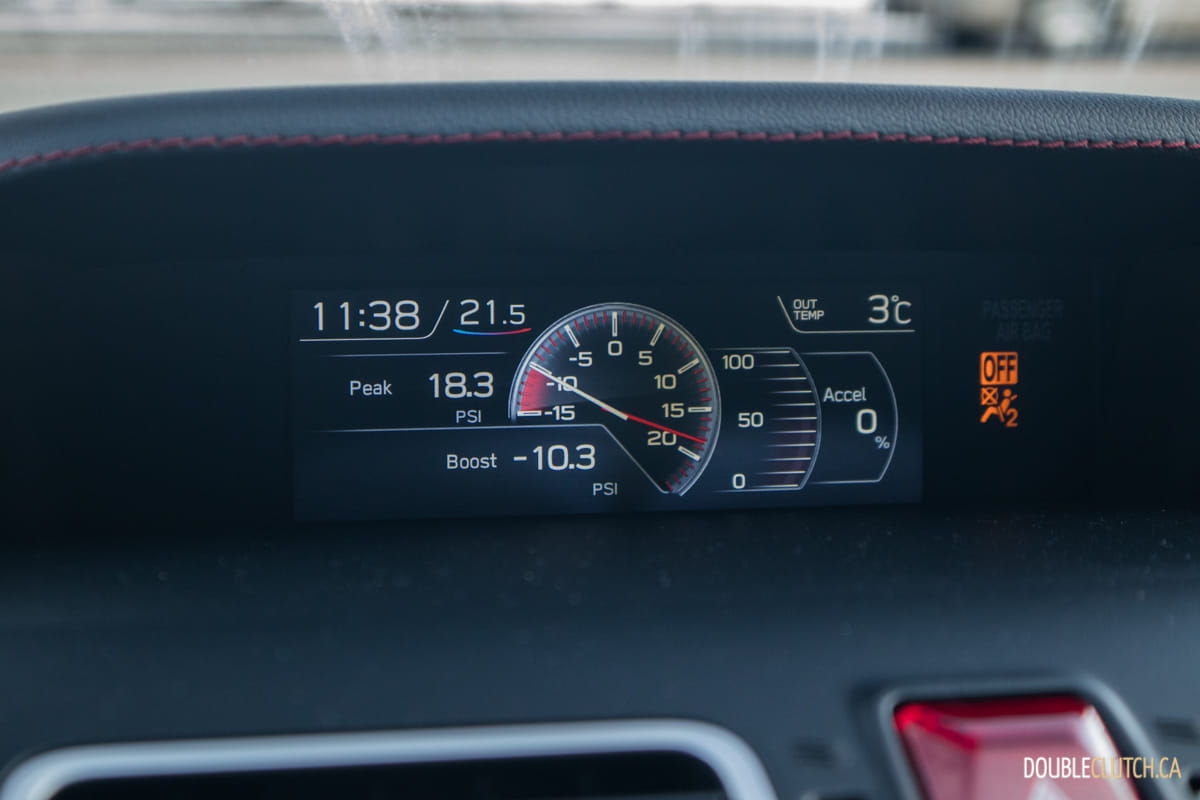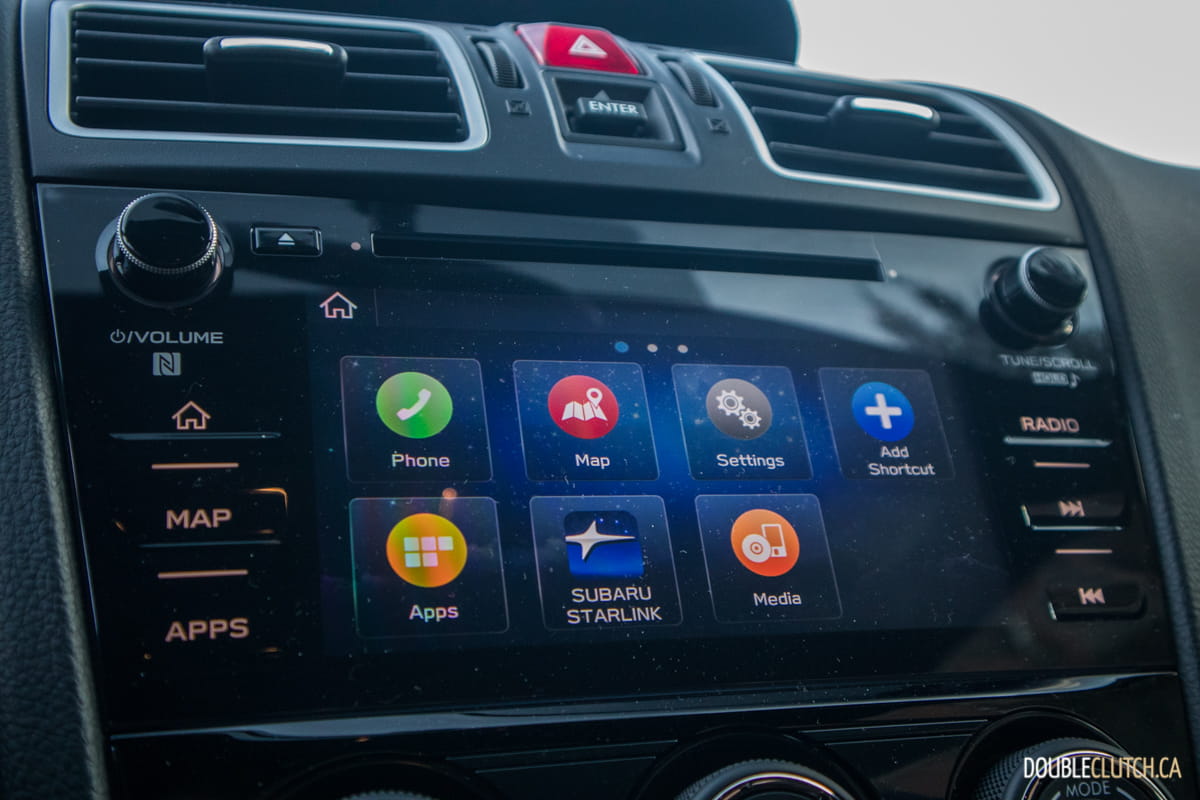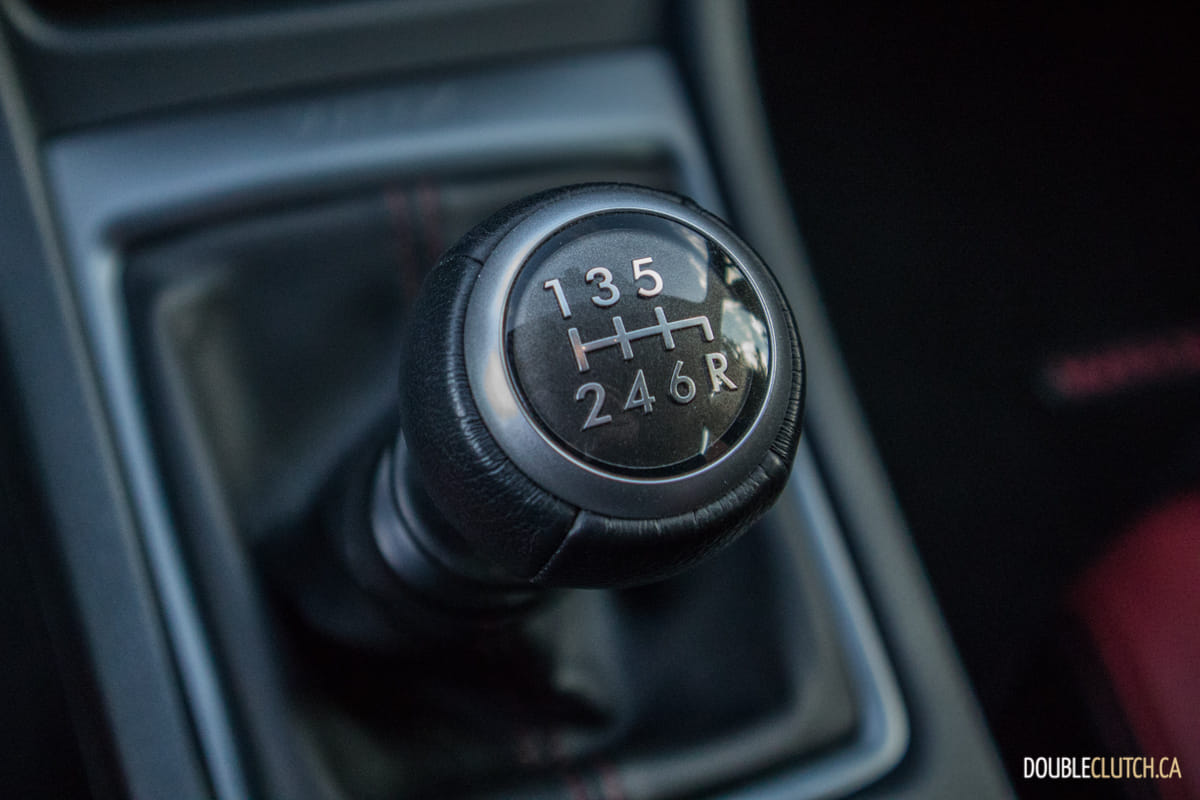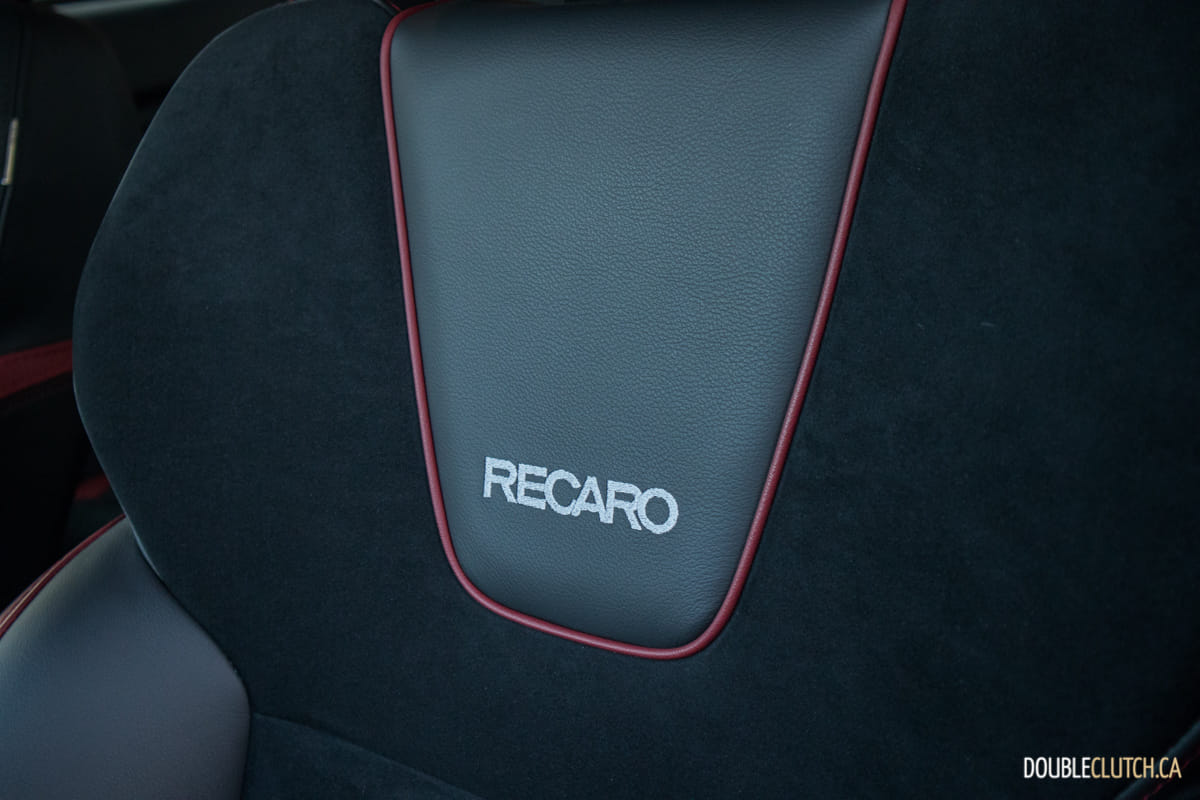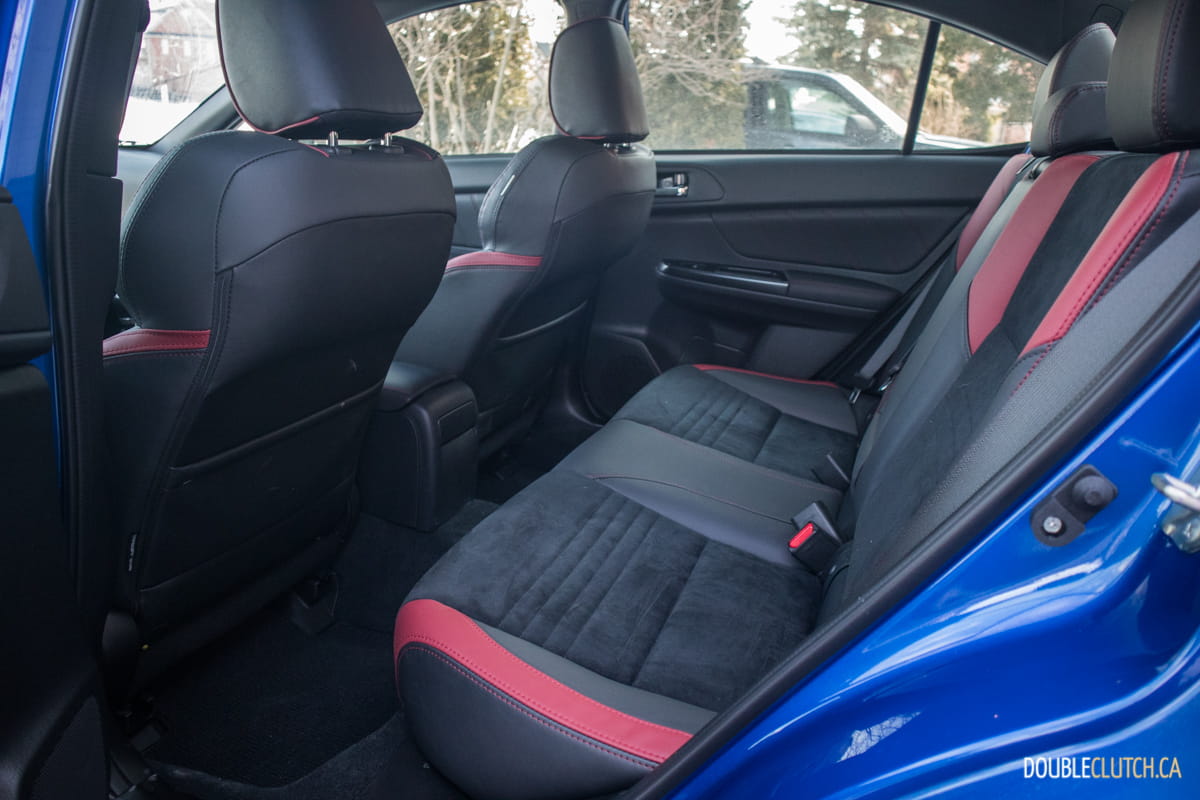It was not long ago when driving enthusiasts had a plethora of performance-oriented sedans with manual transmissions to choose from. With the rising popularity of crossover and SUVs, as well as changing consumer demand towards autonomous and self-driving options, manufacturers have strayed away from offering the third pedal in favour of less exciting but more mainstream and fuel efficient models.

Not wanting to follow this trend, Subaru has allowed its full WRX and WRX STI lineup to keep a row-your-own option. These models have persevered this shifting culture and embraced being some of the last few remaining manual performance sedans in the market, and we have borrowed one for a week to evaluate its relevance in today’s automotive market.
The 2020 Subaru WRX Sport-tech RS here is painted in the iconic World Rally Blue Pearl that pays tribute to Subaru’s glorious rally racing days. The WRX, and its STI sibling, both carry a more aggressive front fascia than the regular Impreza (reviewed here), but the lineage is certainly evident. Despite Subaru’s efforts to make the WRX look more mature, the signature bulging fenders and hood scoop continue to appeal to those that are young at heart. The WRX might look like an odd duck in the land of generic crossovers, but its aggressive styling is right at home when compared to other hot hatches such as the Honda Civic Type R (reviewed here) and the Hyundai Veloster N (reviewed here).
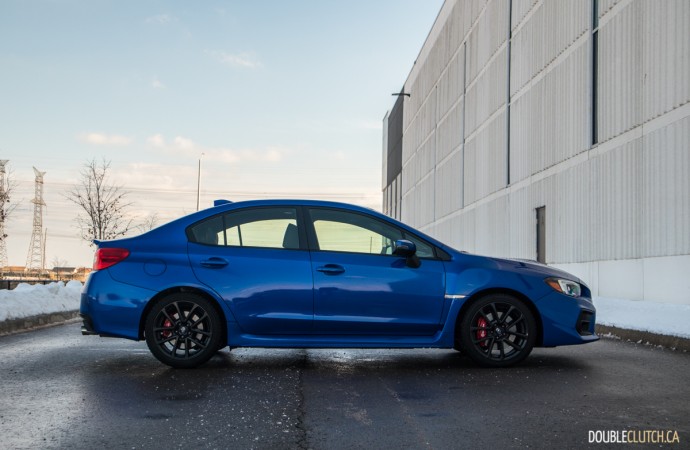
Power comes from a 2.0-litre horizontally opposed four-cylinder engine that is fitted with a twin-scroll turbocharger and a top-mount intercooler. Horsepower is rated at 268 at 5,600 RPM, and torque is measured at 258 lb-ft. from 2,000 to 5,200 RPM. The WRX’s power is accessible, with torque readily available at any moment. The six-speed manual transmission equipped in our tester has been tuned for 2020 to improve its infamous rev hang, and the WRX is now much more livable the daily commute. The 0 to 100 km/h sprint is completed in 5.4 seconds, a whole half-second faster than automatic models.
When compared to its big brother the WRX STI (reviewed here), the WRX’s peak torque arrives sooner, making for a punchier feeling off the line and more city friendly power delivery. The WRX STI is more fun when it is pushed to the limits with its rev-happy EJ25 motor, and they each have a polarizing personality, so buyers are encouraged to try them both out before making a decision.
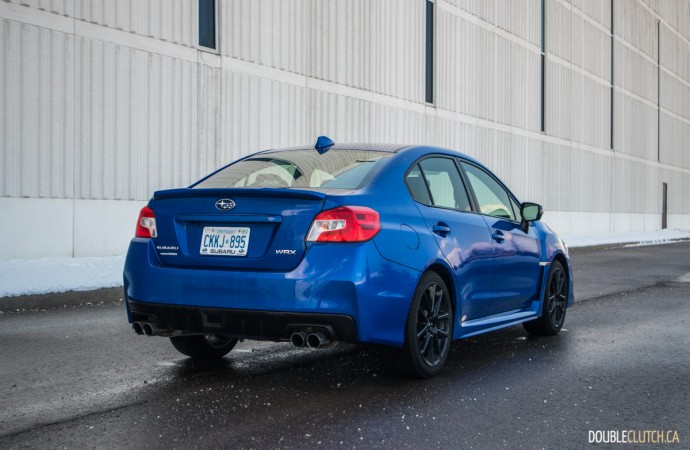
The electric steering rack on the WRX is accurate with decent weight. Road feel is lacking when compared to the conventional hydraulic steering in the STI, but we would stop short of calling it isolated. Subaru’s heralded symmetrical all-wheel drive system as well as the WRX’s chassis tuning contribute to planted and confident handling, and a set of Brembo four-piston high-performance brakes is standard on all Sport-tech RS models to assist if a corner entry is too hot. Standard on WRXs equipped with Sport Lineartronic automatic gearboxes is the Subaru Intelligent Drive (SI-DRIVE) system, allowing for sharper response; unfortunately drivers who wish to row their own are left out of this option.
Fuel economy is rated at 11.3L/100km in the city, and 8.5L/100km on the highway. This represents a significant improvement over models with the automatic transmission (12.9 and 9.7L/100km), and our observed results over a week of winter testing yielded 11.5L/100km. Premium fuel is required for the Subaru WRX, and its fuel tank capacity is measured at 60 litres.
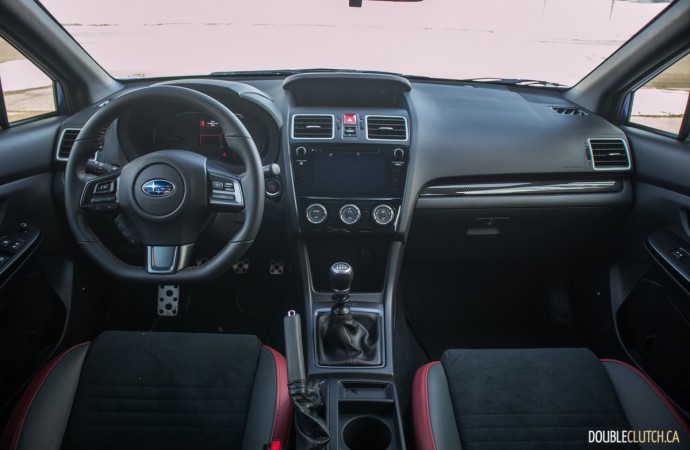
Subaru’s interior design has always emphasized a function over form approach, and it is no exception here. Materials are reflective of the WRX’s roots as an economy car, but the good news is that all functions are well within reach. Sport-tech models receive an upgraded seven-inch touchscreen infotainment system with built-in GPS navigation, and there are shortcut keys alongside the screen for quick access to important features such as home screen, radio, and map. Smartphone integration can be done through Apple CarPlay, Android Auto, or Subaru’s own STARLINK application. Sport-tech models also receive an upgraded Harman-Kardon nine-speaker audio system, with a sound quality that leaves much to be desired for audiophiles.
Unique in the RS are the standard Recaro performance seats; they are similar to the set found in the STI and offer excellent ergonomics as well as long distance comfort. These bucket seats, wrapped in Ultrasuede material, inject a lot of sportiness into the simple cabin, and provided great support when the lateral G-force gets high. Head and legroom are sufficient for both rows of passengers, but the large transmission tunnel in the rear seat takes away most of the legroom for the fifth passenger. Ride quality is firm but not punishing, and the WRX’s equal-length headers eliminated the droning rumble that is still evident in the STI. Trunk space is measured at 340 litres, and it feels bigger than that given its accommodating opening.
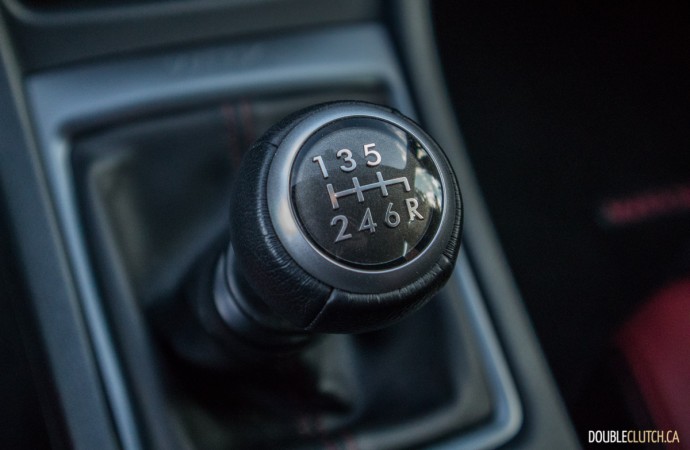
Another important update to the 2020 Subaru WRX models is the inclusion of Subaru’s EyeSight driver assist system in all models with the Sport Lineartronic transmission. It is regrettable that models with a clutch once again are left without this, especially considering the popularity of the manual gearbox in WRX sales charts, as well as the inclusion of driver assist technologies in the manual Volkswagen Golf GTI and the Honda Civic Si.
Pricing for the 2020 Subaru WRX starts at $29,995, and our tested Sport-tech RS model sits at $39,695. There are no options available, and uncoincidentally this is $600 cheaper than the STI’s starting price. The Sport-tech RS is our preferred option of the WRX and WRX STI family, for its more modern turbocharged powerplant, smoother power delivery, and the performance-oriented parts onboard. The all-wheel-drive makes it more appealing than most of the performance offerings in this price range such as the Hyundai Veloster N and the Volkswagen Golf GTI.

At the end of the day, the Golf GTI has a better interior and a more compliant ride, and the Veloster N is more fun at the limits, but the Subaru WRX continues to offer a unique mix of fun, practicality, and winter confidence. We applaud the fact that Subaru keeps offering WRX with the manual transmission, and despite glaring omissions on the features list, it has become the go-to pick for a sub-$40K all-wheel drive performance sedan for manual aficionados.
See also:
2019 Subaru WRX STI Sport-tech
2019 Subaru WRX Sport-tech
2020 Honda Civic Type R

